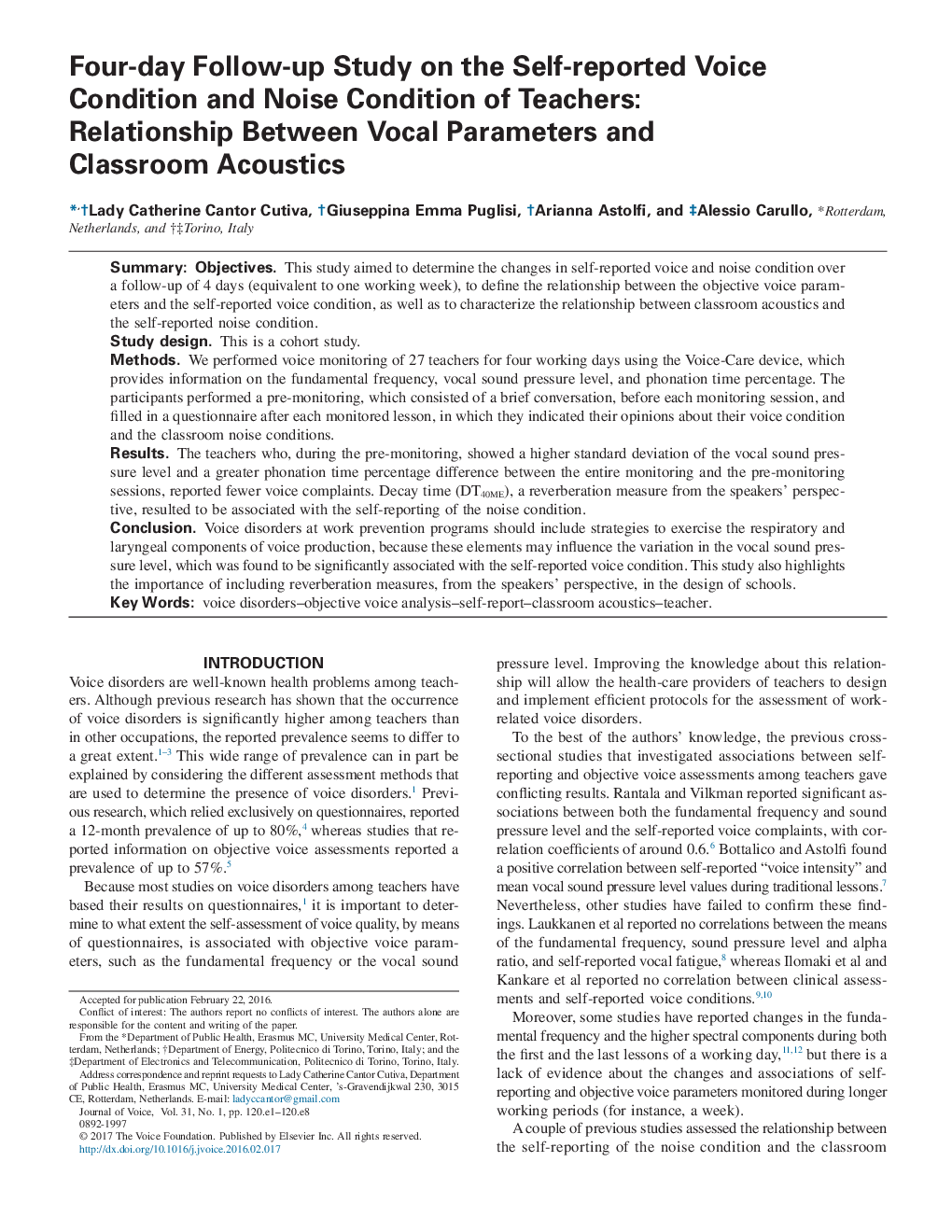| Article ID | Journal | Published Year | Pages | File Type |
|---|---|---|---|---|
| 5124339 | Journal of Voice | 2017 | 8 Pages |
SummaryObjectivesThis study aimed to determine the changes in self-reported voice and noise condition over a follow-up of 4 days (equivalent to one working week), to define the relationship between the objective voice parameters and the self-reported voice condition, as well as to characterize the relationship between classroom acoustics and the self-reported noise condition.Study designThis is a cohort study.MethodsWe performed voice monitoring of 27 teachers for four working days using the Voice-Care device, which provides information on the fundamental frequency, vocal sound pressure level, and phonation time percentage. The participants performed a pre-monitoring, which consisted of a brief conversation, before each monitoring session, and filled in a questionnaire after each monitored lesson, in which they indicated their opinions about their voice condition and the classroom noise conditions.ResultsThe teachers who, during the pre-monitoring, showed a higher standard deviation of the vocal sound pressure level and a greater phonation time percentage difference between the entire monitoring and the pre-monitoring sessions, reported fewer voice complaints. Decay time (DT40ME), a reverberation measure from the speakers' perspective, resulted to be associated with the self-reporting of the noise condition.ConclusionVoice disorders at work prevention programs should include strategies to exercise the respiratory and laryngeal components of voice production, because these elements may influence the variation in the vocal sound pressure level, which was found to be significantly associated with the self-reported voice condition. This study also highlights the importance of including reverberation measures, from the speakers' perspective, in the design of schools.
